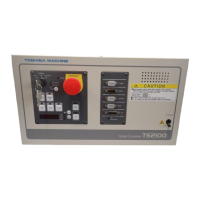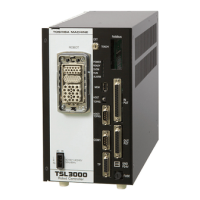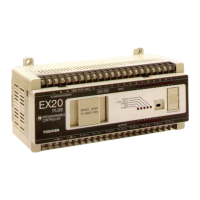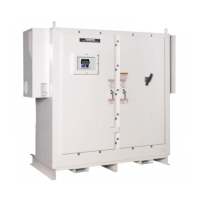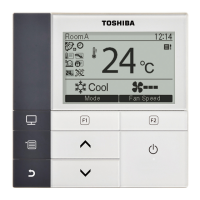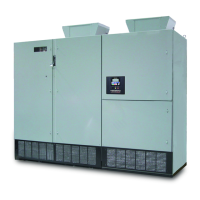GX9 ASD Installation and Operation Manual 21
Terminal Descriptions
Note: The programmable terminal assignments may be accessed and changed from the
default settings as mapped on pg. 44 or via the Direct Access method: Program
Direct Access
applicable parameter number. See the section titled Program Mode
Menu Navigation on pg. 44 for the applicable Direct Access parameter numbers. For
further information on terminal assignments and default setting changes, see the
sections titled Default Setting Changes on pg. 61 and Terminal on pg. 47.
Note: See the section titled Cable/Terminal Specifications on pg. 236 for the ASD conductor
and terminal electrical specifications.
ST — The default terminal assignment is Standby (ST). As the default setting, this terminal must be
activated for normal system operation. The ST terminal is activated by connecting CC to this terminal
(Sink mode). When deactivated, OFF is flashed on the LED screen and the Not-Ready-to-Run icon is
displayed on the LCD screen as shown in Figure 21 on pg 35. This input terminal may be programmed
to any of the functions listed in Table 8 on pg. 217 (see F113).
RES — The default terminal assignment is Reset (RES). As the default setting, this terminal resets any
active alarms or faults. The RES terminal is activated by connecting CC to this terminal (Sink mode). A
momentary connection to CC resets the ASD and any fault indications from the display. Reset is
effective when faulted only. This input terminal may be programmed to any of the functions listed in
Table 8 on pg. 217 (see F114). The cause of the trip must be corrected for a Reset to enable the system
for normal ASD operations.
F — The default terminal assignment is Forward (F) run. As the default setting, this terminal provides
a forward run command. The F terminal is activated by connecting CC to this terminal (Sink mode). A
connection to CC provides a forward run command for the duration of the activation. This input
terminal may be programmed to any of the functions listed in Table 8 on pg. 217 (see F111).
R — The default terminal assignment is Reverse (R) run. As the default setting, this terminal provides
a reverse run command. The R terminal is activated by connecting CC to this terminal (Sink mode). A
connection to CC provides a forward run command for the duration of the activation. This input
terminal may be programmed to any of the functions listed in Table 8 on pg. 217 (see F112).
S1 — The default terminal assignment is Preset Speed 1
(S1) (see Preset Speed 1 on pg. 82). As the
default setting, this terminal provides a run command for the Preset Speed 1 setting (F018). The S1
terminal is activated by connecting CC to this terminal (Sink mode). A connection to CC provides a
Preset Speed 1 run command for the duration of the activation. This input terminal may be
programmed to any of the functions listed in Table 8 on pg. 217 (see F115).
S2 — The default terminal assignment is Preset Speed 2 (S2) (see Preset Speed 2 on pg. 82). As the
default setting, this terminal provides a run command for the Preset Speed 2 setting (F019). The S2
terminal is activated by connecting CC to this terminal (Sink mode). A connection to CC provides a
Preset Speed 2 run command for the duration of the activation. This input terminal may be
programmed to any of the functions listed in Table 8 on pg. 217 (see F116).
S3 — The default terminal assignment is Preset Speed 3 (S3) (see Preset Speed 3 on pg. 83). As the
default setting, this terminal provides a run command for the Preset Speed 3 setting (F020). The S3
terminal is activated by connecting CC to this terminal (Sink mode). A connection to CC provides a
Preset Speed 3 run command for the duration of the activation. This input terminal may be
programmed to any of the functions listed in Table 8 on pg. 217 (see F117).
S4 — The default terminal assignment is Emergency Off (S4) (see Emergency Off on pg. 185). As the
default setting, this terminal provides an Emergency Off command upon activation and the system
remains in the Emergency Off condition until reset. The S4 terminal is activated by connecting CC to
this terminal (Sink mode). This input terminal may be programmed to any of the functions listed in
Table 8 on pg. 217 (see F118).

